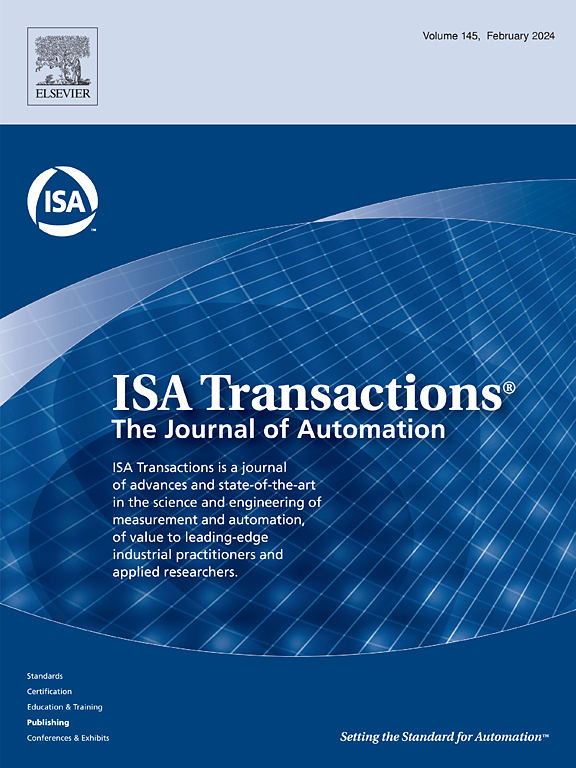Cooperative control for a ROV-based deep-sea mining vehicle with learned uncertain nonlinear dynamics
IF 6.3
2区 计算机科学
Q1 AUTOMATION & CONTROL SYSTEMS
引用次数: 0
Abstract
To overcome the bottleneck problem of the track slippage of the tracked mining vehicle in the traditional deep-sea mining system, this paper proposes an enhanced remotely-operated vehicle (ROV)-based deep-sea mining system. A ROV-based Deep-sea Mining Vehicle (RDMV), consisting of two ROVs and a mining robot (MRT), is instead of the traditional tracked Deep-sea mining vehicle. Firstly, the dynamic model of the RDMV as a control object is established based on Lagrangian function. Secondly, a cooperative control strategy is proposed for traction and sinking control of the RDMV. A distributed model predictive control (DMPC)-based controller is developed to obtain virtual speed control laws to meet the control objects. To track the virtual speed control laws, a learning-based model predictive control (LMPC)-based controller is investigated to compute the ROVs’ optimal control input, where a Kinky Inference (KI) prediction function is introduced in the state transition model to estimate the unknown external disturbances under random noise. Finally, the feasibility and the superiority of the LMPC controller is preliminarily verified in a degenerate individual motion control of a ROV, and then the cooperative control strategy is proven to be effective through numerical simulations.
基于rov的学习不确定非线性动力学的深海采矿车协同控制。
为了克服传统深海采矿系统中履带式采矿车履带滑移的瓶颈问题,提出了一种基于增强型ROV的深海采矿系统。一种基于rov的深海采矿车(RDMV),由两个rov和一个采矿机器人(MRT)组成,取代了传统的履带式深海采矿车。首先,基于拉格朗日函数建立了RDMV作为控制对象的动力学模型;其次,提出了RDMV牵引下沉控制的协同控制策略。为了获得满足控制对象的虚拟速度控制规律,设计了一种基于分布式模型预测控制(DMPC)的控制器。为了跟踪机器人的虚拟速度控制规律,研究了一种基于学习模型预测控制(LMPC)的控制器来计算机器人的最优控制输入,并在状态转移模型中引入了Kinky推理(KI)预测函数来估计随机噪声下未知的外部干扰。最后,初步验证了LMPC控制器在ROV退化个体运动控制中的可行性和优越性,并通过数值仿真验证了该协同控制策略的有效性。
本文章由计算机程序翻译,如有差异,请以英文原文为准。
求助全文
约1分钟内获得全文
求助全文
来源期刊

ISA transactions
工程技术-工程:综合
CiteScore
11.70
自引率
12.30%
发文量
824
审稿时长
4.4 months
期刊介绍:
ISA Transactions serves as a platform for showcasing advancements in measurement and automation, catering to both industrial practitioners and applied researchers. It covers a wide array of topics within measurement, including sensors, signal processing, data analysis, and fault detection, supported by techniques such as artificial intelligence and communication systems. Automation topics encompass control strategies, modelling, system reliability, and maintenance, alongside optimization and human-machine interaction. The journal targets research and development professionals in control systems, process instrumentation, and automation from academia and industry.
 求助内容:
求助内容: 应助结果提醒方式:
应助结果提醒方式:


